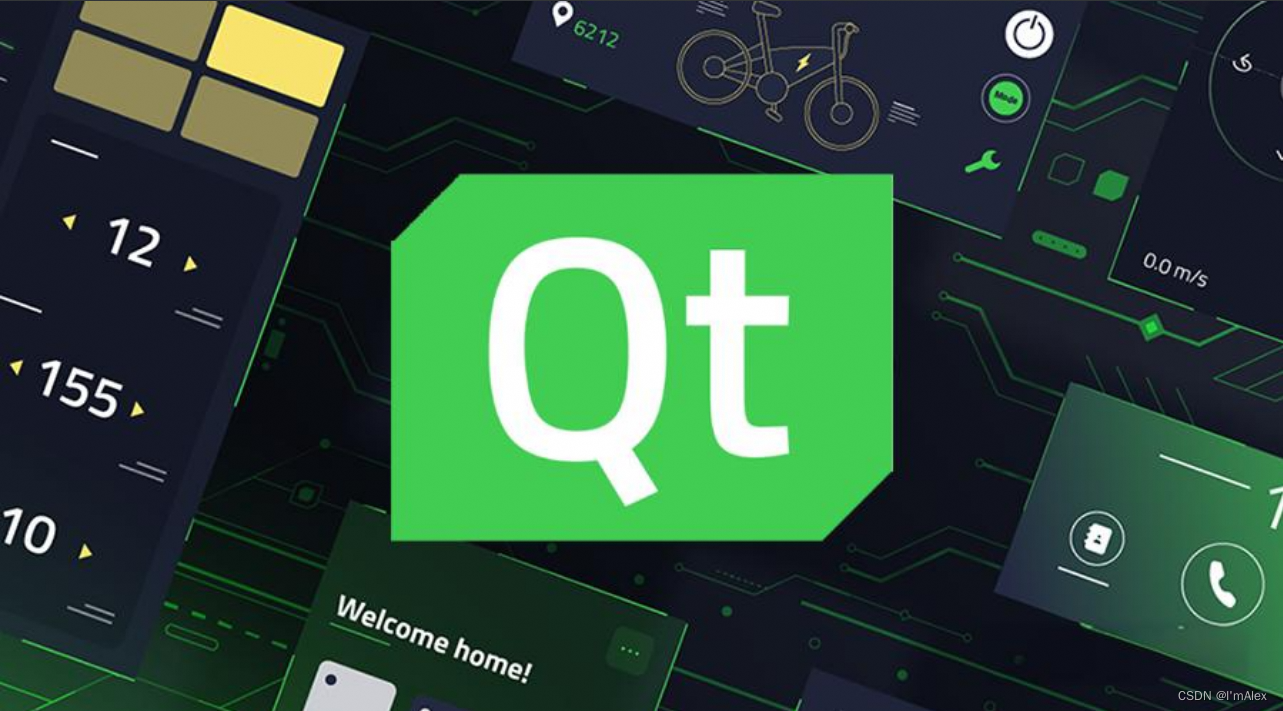QMessageBox是Qt提供的一个功能强大且灵活的消息对话框类,通过本篇文章的学习,你应该对QMessageBox有了全面的理解,能够在自己的项目中正确使用它。QMessageBox在用户界面中帮助你更好地与用户进行消息交互,实现交互式和响应式的应用程序,有助于创建用户友好和高效的错误提示、确认对话框、信息通知等应用场景。
🧑 博主简介:现任阿里巴巴嵌入式技术专家,15年工作经验,深耕嵌入式+人工智能领域,精通嵌入式领域开发、技术管理、简历招聘面试。CSDN优质创作者,提供产品测评、学习辅导、简历面试辅导、毕设辅导、项目开发、C/C++/Java/Python/Linux/AI等方面的服务,如有需要请站内私信或者联系任意文章底部的的VX名片(ID:
gylzbk)
💬 博主粉丝群介绍:① 群内初中生、高中生、本科生、研究生、博士生遍布,可互相学习,交流困惑。② 热榜top10的常客也在群里,也有数不清的万粉大佬,可以交流写作技巧,上榜经验,涨粉秘籍。③ 群内也有职场精英,大厂大佬,可交流技术、面试、找工作的经验。④ 进群免费赠送写作秘籍一份,助你由写作小白晋升为创作大佬。⑤ 进群赠送CSDN评论防封脚本,送真活跃粉丝,助你提升文章热度。有兴趣的加文末联系方式,备注自己的CSDN昵称,拉你进群,互相学习共同进步。


【QT开发】消息对话框QMessageBox类详解及实战应用
- 🌟概述
- 📖QMessageBox类介绍
- 常用方法
- 重要按钮类型
- 重要图标类型
- 💻示例代码
- 代码解释
- 方法分析
- 🧐注意事项
- 🛠️使用技巧
- 📌总结
🌟概述
QMessageBox是Qt框架中用于显示消息对话框的类,提供了便捷的消息通知和用户提示功能。通过掌握QMessageBox的用法,你可以在Qt项目中轻松实现信息提示、警告、错误消息、询问确认等功能。
QMessageBox在需要与用户进行消息交互的场景中非常常见,如错误提示、确认对话框、信息通知等。
📖QMessageBox类介绍
在Qt官方文档中,QMessageBox类的定义如下:
class QMessageBox : public QDialog
{// ...
}
QMessageBox是QDialog的子类,用于显示消息对话框。以下是一些关键特性和功能:
- 信息对话框:提供显示普通信息的功能。
- 警告对话框:提供显示警告信息的功能。
- 错误对话框:提供显示错误信息的功能。
- 询问确认对话框:提供显示询问和确认的功能。
常用方法
以下是QMessageBox类中一些常用的方法及其简要介绍:
QMessageBox(QWidget *parent = nullptr):构造函数,创建一个QMessageBox对象。static void information(QWidget *parent, const QString &title, const QString &text, StandardButtons buttons = Ok, StandardButton defaultButton = NoButton):显示信息对话框。static void warning(QWidget *parent, const QString &title, const QString &text, StandardButtons buttons = Ok, StandardButton defaultButton = NoButton):显示警告对话框。static void critical(QWidget *parent, const QString &title, const QString &text, StandardButtons buttons = Ok, StandardButton defaultButton = NoButton):显示错误对话框。static StandardButton question(QWidget *parent, const QString &title, const QString &text, StandardButtons buttons = StandardButtons(Yes | No), StandardButton defaultButton = NoButton):显示询问确认对话框,并返回用户的选择。void setText(const QString &text):设置对话框的消息文本。void setInformativeText(const QString &text):设置对话框的附加信息文本。void setDetailedText(const QString &text):设置对话框的详细信息文本。void setDefaultButton(StandardButton button):设置对话框的默认按钮。void setIcon(Icon icon):设置对话框的图标类型。int exec():显示对话框,并进入事件循环,返回对话框的执行结果。
重要按钮类型
以下是QMessageBox类中一些常见的按钮类型及其简要介绍:
QMessageBox::Ok:确定按钮。QMessageBox::Cancel:取消按钮。QMessageBox::Yes:是按钮。QMessageBox::No:否按钮。QMessageBox::Retry:重试按钮。QMessageBox::Ignore:忽略按钮.
重要图标类型
以下是QMessageBox类中一些常见的图标类型及其简要介绍:
QMessageBox::NoIcon:无图标。QMessageBox::Information:信息图标。QMessageBox::Warning:警告图标。QMessageBox::Critical:错误图标。QMessageBox::Question:询问图标。
💻示例代码
下面是一个简单的示例,用来演示如何使用QMessageBox显示信息对话框、警告对话框、错误对话框和询问确认对话框:
#include <QApplication>
#include <QMainWindow>
#include <QPushButton>
#include <QMessageBox>
#include <QVBoxLayout>
#include <QWidget>class MessageBoxWidget : public QWidget
{Q_OBJECTpublic:MessageBoxWidget(QWidget *parent = nullptr);private slots:void showInformation();void showWarning();void showError();void showQuestion();private:QLabel *label;
};MessageBoxWidget::MessageBoxWidget(QWidget *parent): QWidget(parent), label(new QLabel(this))
{QPushButton *informationButton = new QPushButton("Show Information", this);QPushButton *warningButton = new QPushButton("Show Warning", this);QPushButton *errorButton = new QPushButton("Show Error", this);QPushButton *questionButton = new QPushButton("Show Question", this);QVBoxLayout *layout = new QVBoxLayout();layout->addWidget(informationButton);layout->addWidget(warningButton);layout->addWidget(errorButton);layout->addWidget(questionButton);layout->addWidget(label);connect(informationButton, &QPushButton::clicked, this, &MessageBoxWidget::showInformation);connect(warningButton, &QPushButton::clicked, this, &MessageBoxWidget::showWarning);connect(errorButton, &QPushButton::clicked, this, &MessageBoxWidget::showError);connect(questionButton, &QPushButton::clicked, this, &MessageBoxWidget::showQuestion);setLayout(layout);
}void MessageBoxWidget::showInformation()
{QMessageBox::information(this, "Information", "This is an information message.");
}void MessageBoxWidget::showWarning()
{QMessageBox::warning(this, "Warning", "This is a warning message.");
}void MessageBoxWidget::showError()
{QMessageBox::critical(this, "Error", "This is an error message.");
}void MessageBoxWidget::showQuestion()
{QMessageBox::StandardButton reply;reply = QMessageBox::question(this, "Question", "Do you want to continue?", QMessageBox::Yes | QMessageBox::No);if (reply == QMessageBox::Yes) {label->setText("User chose Yes.");} else {label->setText("User chose No.");}
}int main(int argc, char *argv[])
{QApplication app(argc, argv);// 创建主窗口QMainWindow mainWindow;mainWindow.setWindowTitle("QMessageBox Example");mainWindow.resize(400, 300);// 创建消息对话框控件MessageBoxWidget *messageBoxWidget = new MessageBoxWidget();mainWindow.setCentralWidget(messageBoxWidget);// 显示主窗口mainWindow.show();return app.exec();
}
代码解释
-
创建主窗口,并设置其标题和大小:
QMainWindow mainWindow; mainWindow.setWindowTitle("QMessageBox Example"); mainWindow.resize(400, 300); -
创建自定义QWidget的子类MessageBoxWidget,并提供不同类型的消息对话框:
class MessageBoxWidget : public QWidget { public:MessageBoxWidget(QWidget *parent = nullptr);private slots:void showInformation();void showWarning();void showError();void showQuestion();private:QLabel *label; };MessageBoxWidget::MessageBoxWidget(QWidget *parent): QWidget(parent), label(new QLabel(this)) {QPushButton *informationButton = new QPushButton("Show Information", this);QPushButton *warningButton = new QPushButton("Show Warning", this);QPushButton *errorButton = new QPushButton("Show Error", this);QPushButton *questionButton = new QPushButton("Show Question", this);QVBoxLayout *layout = new QVBoxLayout();layout->addWidget(informationButton);layout->addWidget(warningButton);layout->addWidget(errorButton);layout->addWidget(questionButton);layout->addWidget(label);connect(informationButton, &QPushButton::clicked, this, &MessageBoxWidget::showInformation);connect(warningButton, &QPushButton::clicked, this, &MessageBoxWidget::showWarning);connect(errorButton, &QPushButton::clicked, this, &MessageBoxWidget::showError);connect(questionButton, &QPushButton::clicked, this, &MessageBoxWidget::showQuestion);setLayout(layout); }void MessageBoxWidget::showInformation() {QMessageBox::information(this, "Information", "This is an information message."); }void MessageBoxWidget::showWarning() {QMessageBox::warning(this, "Warning", "This is a warning message."); }void MessageBoxWidget::showError() {QMessageBox::critical(this, "Error", "This is an error message."); }void MessageBoxWidget::showQuestion() {QMessageBox::StandardButton reply;reply = QMessageBox::question(this, "Question", "Do you want to continue?", QMessageBox::Yes | QMessageBox::No);if (reply == QMessageBox::Yes) {label->setText("User chose Yes.");} else {label->setText("User chose No.");} } -
创建消息对话框控件,并添加到主窗口的中心控件中:
MessageBoxWidget *messageBoxWidget = new MessageBoxWidget(); mainWindow.setCentralWidget(messageBoxWidget); -
启动Qt事件循环:
return app.exec();
方法分析
-
information():用于显示信息对话框。QMessageBox::information(this, "Information", "This is an information message."); -
warning():用于显示警告对话框。QMessageBox::warning(this, "Warning", "This is a warning message."); -
critical():用于显示错误对话框。QMessageBox::critical(this, "Error", "This is an error message."); -
question():用于显示询问确认对话框,并返回用户的选择。QMessageBox::StandardButton reply; reply = QMessageBox::question(this, "Question", "Do you want to continue?", QMessageBox::Yes | QMessageBox::No); if (reply == QMessageBox::Yes) {label->setText("User chose Yes."); } else {label->setText("User chose No."); }
🧐注意事项
- 消息文本:设置适当的消息文本,确保用户能够理解对话框的内容。
- 按钮选项:根据需要设置合理的按钮选项,提供更好的用户体验。
- 对话框标题:设置明确的对话框标题,有助于用户理解对话框的目的。
🛠️使用技巧
-
附加信息文本:可以使用
setInformativeText()方法设置对话框的附加信息文本,提供更多细节:QMessageBox msgBox; msgBox.setWindowTitle("Information"); msgBox.setText("This is an information message."); msgBox.setInformativeText("Additional information can be provided here."); msgBox.setIcon(QMessageBox::Information); msgBox.exec(); -
详细信息文本:可以使用
setDetailedText()方法设置对话框的详细信息文本,提供详细说明或调试信息:QMessageBox msgBox; msgBox.setWindowTitle("Error"); msgBox.setText("An error occurred."); msgBox.setDetailedText("Error details can be provided here for debugging purposes."); msgBox.setIcon(QMessageBox::Critical); msgBox.exec(); -
自定义按钮文本:可以自定义对话框按钮的文本,提供更直观的用户指示:
QMessageBox msgBox; msgBox.setWindowTitle("Question"); msgBox.setText("Do you want to continue?"); msgBox.setIcon(QMessageBox::Question); QAbstractButton *yesButton = msgBox.addButton(tr("Yes"), QMessageBox::YesRole); QAbstractButton *noButton = msgBox.addButton(tr("No"), QMessageBox::NoRole); msgBox.exec();if (msgBox.clickedButton() == yesButton) {label->setText("User chose Yes."); } else if (msgBox.clickedButton() == noButton) {label->setText("User chose No."); } -
设置默认按钮:可以使用
setDefaultButton()方法设置对话框的默认按钮,方便用户快速选择:QMessageBox msgBox; msgBox.setWindowTitle("Warning"); msgBox.setText("This is a warning message."); msgBox.setIcon(QMessageBox::Warning); msgBox.setStandardButtons(QMessageBox::Ok | QMessageBox::Cancel); msgBox.setDefaultButton(QMessageBox::Ok); msgBox.exec(); -
使用非模态对话框:可以使用非模态方式显示消息对话框,不阻塞主窗口的操作:
QMessageBox *msgBox = new QMessageBox(QMessageBox::Information, "Information", "This is an information message.", QMessageBox::Ok, this); msgBox->setAttribute(Qt::WA_DeleteOnClose); // 当对话框关闭时,自动删除对象 msgBox->show();
📌总结
QMessageBox是Qt提供的一个功能强大且灵活的消息对话框类,通过本篇文章的学习,你应该对QMessageBox有了全面的理解,能够在自己的项目中正确使用它。QMessageBox在用户界面中帮助你更好地与用户进行消息交互,实现交互式和响应式的应用程序,有助于创建用户友好和高效的错误提示、确认对话框、信息通知等应用场景。







